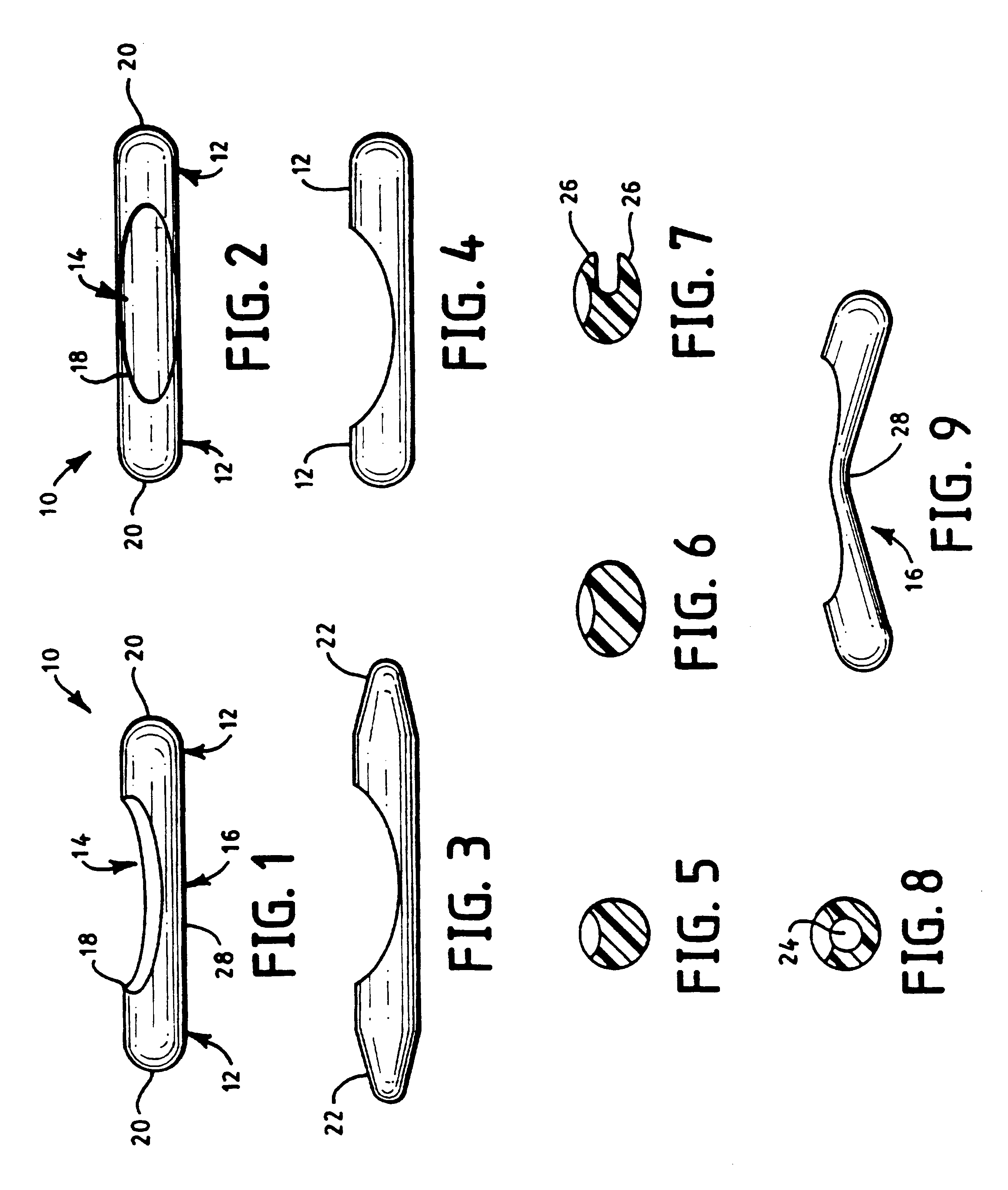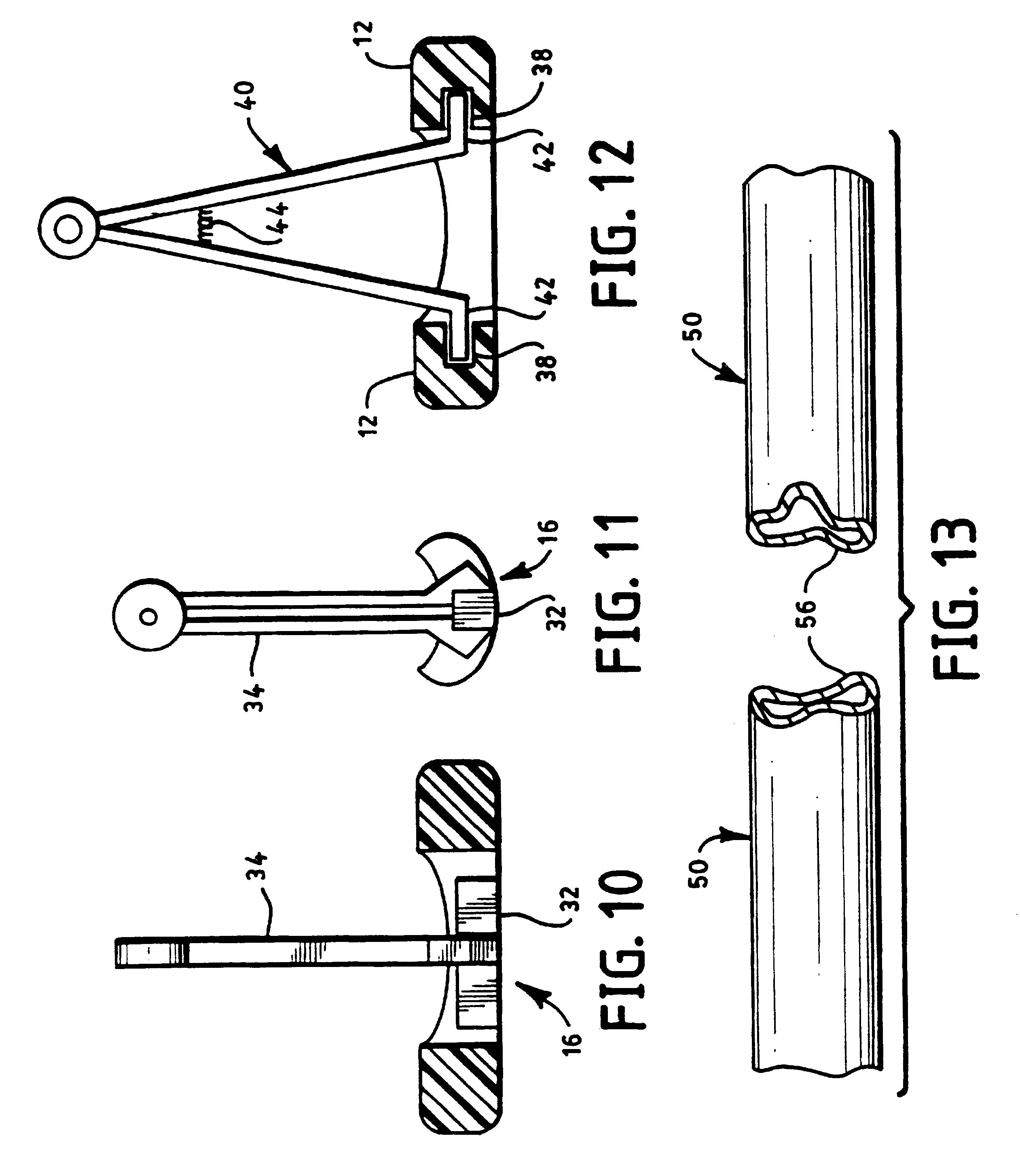Device and method for the surgical anastomasis of tubular structures
a tubular structure and anastomosis technology, applied in the field of tubular structure surgical anastomosis, can solve the problems of increasing the likelihood of thrombosis and/or structural failure, increasing the difficulty of surgical anastomosis, and reducing the surgical anastomosis, so as to reduce tissue trauma, less technical demands, and the effect of reducing the problem
- Summary
- Abstract
- Description
- Claims
- Application Information
AI Technical Summary
Benefits of technology
Problems solved by technology
Method used
Image
Examples
Embodiment Construction
The basic embodiment 10 of the device of the present invention is illustrated in FIGS. 1 and 2. The basic device 10 has a generally cylindrical shape. The components of the basic device 10 include a pair of insertion arms 12 and a central depression 14. The depression 14 leaves a bridge 16 connecting the arms 12.
The insertion arms 12 are designed to be non-traumatic when in contact with the inside of the tubular structure. This is accomplished by either making the outer surface of the arms 12 smooth, by forming the arms 12 of a material that retains moisture, and / or by coating the arms 12 with a lubricant. As an aid to insertion, the free extremities 20 of the arms 12 are convexly rounded. Optionally, the free extremities are tapered, as at 22 in FIG. 3. A tapered extremity is easier to insert because the tubular structure, which is collapsed when empty, does not have to be opened as far to start the insertion process.
The arms 12 may have the same or different lengths, as in FIG. 4,...
PUM
 Login to View More
Login to View More Abstract
Description
Claims
Application Information
 Login to View More
Login to View More - R&D
- Intellectual Property
- Life Sciences
- Materials
- Tech Scout
- Unparalleled Data Quality
- Higher Quality Content
- 60% Fewer Hallucinations
Browse by: Latest US Patents, China's latest patents, Technical Efficacy Thesaurus, Application Domain, Technology Topic, Popular Technical Reports.
© 2025 PatSnap. All rights reserved.Legal|Privacy policy|Modern Slavery Act Transparency Statement|Sitemap|About US| Contact US: help@patsnap.com



